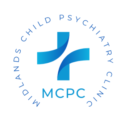- Awesome Services
ADHD In Girls
- ADHD In Girls
Explore How Can We Help You
ADHD In Girls
ADHD in girls can sometimes present differently than in boys, and the symptoms may be less straightforward, leading to potential underdiagnosis or misdiagnosis. It's essential to recognize the unique ways ADHD can manifest in girls to ensure accurate identification and appropriate support. Here are some characteristics and considerations specific to ADHD in girls:
- Inattentiveness:
- Girls with ADHD may exhibit inattentiveness, daydreaming, and distractibility, but their symptoms might be less disruptive compared to boys.
- They may struggle with organization, time management, and completing tasks, leading to academic challenges.
- Social Coping Mechanisms:
- Girls with ADHD might develop social coping mechanisms, such as imitating their peers' behavior, to mask their difficulties in social interactions.
- They may be more prone to internalizing symptoms, leading to anxiety or depression.
- Hyperactivity and Impulsivity:
- While hyperactivity and impulsivity are common in both genders, girls with ADHD may display these behaviors more subtly.
- Hyperactivity might manifest as restlessness rather than overt physical activity.
- Internalized Symptoms:
- Girls with ADHD may internalize their struggles, leading to emotional difficulties, low self-esteem, or feelings of inadequacy.
- They may be more prone to anxiety and depression, and these comorbid conditions can complicate the clinical picture.
- Executive Function Challenges:
- Difficulties with executive functions, such as planning, organizing, and initiating tasks, may be pronounced in girls with ADHD.
- Academic underachievement may be a consequence of executive function challenges.
- Late Onset of Diagnosis:
- ADHD in girls is sometimes diagnosed later than in boys, as their symptoms may be overlooked or attributed to other factors.
- The presentation of ADHD symptoms in girls may become more noticeable as academic and social demands increase.
Understanding these nuances is crucial for educators, parents, and healthcare professionals in recognizing and addressing ADHD in girls. Early identification and intervention can significantly improve outcomes for individuals with ADHD, regardless of gender. If there are concerns about ADHD or related difficulties, seeking an evaluation from a healthcare professional, preferably one with expertise in ADHD, is essential for accurate diagnosis and appropriate support.


